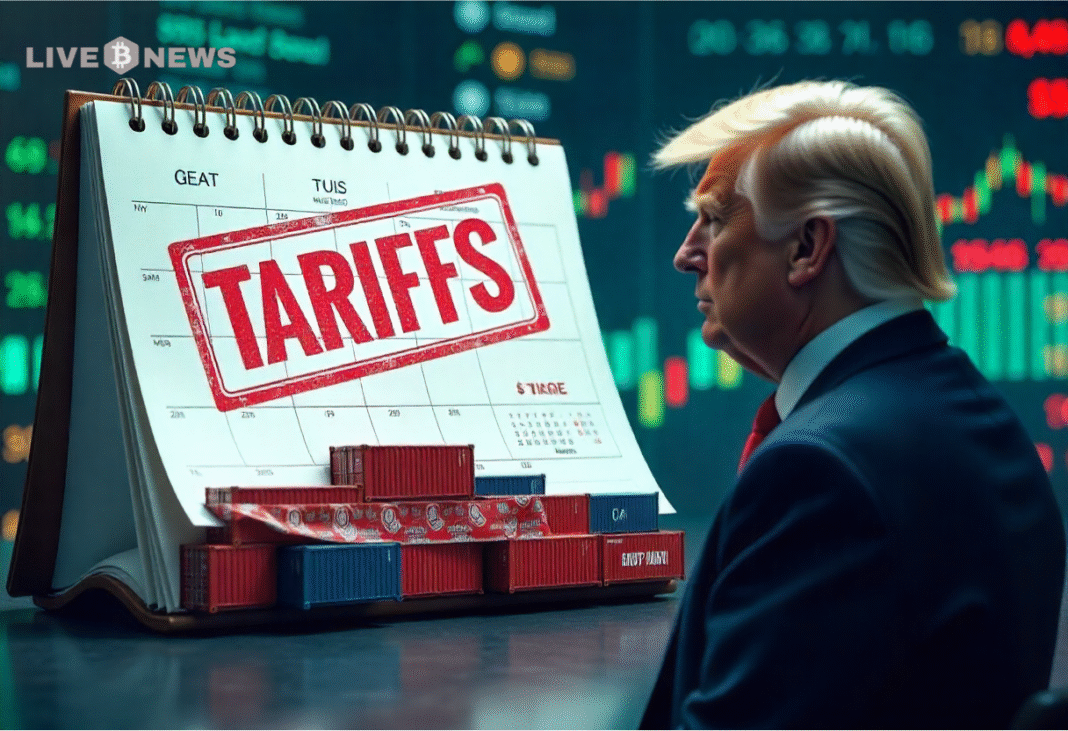New Trump tariffs could influence inflation and crypto prices. Here’s how the new trade policies might affect the future of crypto.
President Donald Trump recently announced new U.S. tariffs, set to start on October 1.
This announcement has already shaken the international financial markets. It targets imports such as pharmaceuticals, furniture and heavy trucks.
While the policy aims to encourage domestic manufacturing, it also raises issues about how it might affect the crypto market.
Trump’s Tariffs and the Crypto Market: A Complex Connection
The new tariffs include a 100% duty on branded pharmaceutical products unless manufacturers establish US production facilities. Kitchen cabinets and bathroom vanities face a 50% tariff, upholstered furniture 30% and heavy trucks 25%.
These rates are high enough to disrupt trade flows and could raise consumer prices.
“Starting October 1st, 2025, we will be imposing a 100% Tariff on any branded or patented Pharmaceutical Product, unless a Company IS BUILDING their Pharmaceutical Manufacturing Plant in America…” – President Donald J. Trump pic.twitter.com/z5EXQhw1xK
— The White House (@WhiteHouse) September 25, 2025
Historically, higher import costs often lead to higher retail prices. This can push inflation upward and prompt the Federal Reserve to consider raising interest rates. A tighter monetary policy usually strengthens the U.S. dollar as international investors move capital into dollar-denominated assets.
However, stronger tariffs can also provoke retaliation from trading partners and trigger trade wars. These kinds of conflicts disrupt global supply chains, slow growth, and shake investor confidence.
Crypto as a Hedge or a Liability
The crypto market’s response to policy changes like these has never been equal. Some investors see Bitcoin as a hedge against inflation and a store of value, independent of central banks.
Others treat crypto as a speculative asset that is prone to sell-offs during economic uncertainty.
If tariffs push inflation higher, Bitcoin’s fixed supply could make it more attractive as investors seek assets not tied to monetary expansion.
On the other hand, higher interest rates increase the appeal of bonds and other income-generating investments.
This can reduce demand for non-yielding assets like Bitcoin.
Put simply, if tariffs slow economic activity and trigger broader market sell-offs, investors may exit riskier positions, including crypto.
Recent Market Trends Show Sensitivity to Policy
The crypto market has already reacted to the tariff news. Bitcoin slid nearly 2% to $109,195, and Ethereum lost similar ground at $3,925. Major altcoins like XRP, BNB and SOL also saw stronger declines.
Analysts report that Bitcoin ETFs went from being net buyers to net sellers, with $258 million flowing out in a single day.
Ethereum ETFs recorded $251 million in outflows. The whales also sold 147,000 BTC since late August, which is the largest reduction since early 2023.
Market participants are also watching economic data.
The Federal Reserve’s core inflation gauge continues to show persistent price pressure. These developments, when combined with trade policy jitters, are affecting investor expectations for both trad-fi and defi assets.
Outlook for Crypto Amid Tariff Uncertainty
Trump’s tariffs are not just a trade policy. They show a trend that could affect inflation, interest rates and capital flows. Each of these factors affects the crypto market differently.
Investors should monitor not only tariff developments but also central bank actions, regulatory signals and international trade responses.
The next few months could feature several ups and downs for both traditional and crypto markets. Bitcoin’s performance will likely depend on whether investors treat it as a hedge or sell it as part of their risk reduction.
DeFi projects and corporate crypto strategies will also be tested as the policy environment continues to change.




